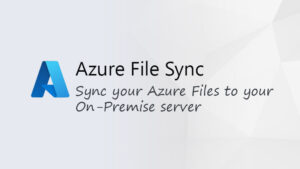Introduction
In the era of digital proliferation, the demand for convenient and flexible data storage solutions has led to the advent of wireless hard drives. These innovative devices offer a new dimension to traditional storage, allowing users to access and manage their data seamlessly without the constraints of physical connections. This comprehensive article delves into the intricate workings of wireless hard drives, exploring their mechanisms, applications, and the myriad benefits they bring to modern computing.
Section 1: Understanding the Basics
1.1 How Wireless Hard Drives Operate
Uncover the core principles behind the functionality of wireless hard drives. Discuss the integration of Wi-Fi or Bluetooth technology within these devices, enabling them to establish wireless connections with various platforms, from computers to smartphones and tablets.
1.2 Storage Technologies Employed
Explore the storage technologies utilized in wireless hard drives, including traditional HDDs (Hard Disk Drives) and modern SSDs (Solid State Drives). Examine the impact of storage type on speed, durability, and overall performance.
Section 2: Connectivity Options
2.1 Wi-Fi Connectivity
Delve into the nuances of Wi-Fi connectivity in wireless hard drives. Discuss how these devices create Wi-Fi networks, allowing multiple devices to connect simultaneously, and the role of encryption protocols in securing data transmissions.
2.2 Bluetooth Connectivity
Examine the application of Bluetooth technology in certain wireless hard drive models. Explore the advantages and limitations of Bluetooth connections, particularly in scenarios where Wi-Fi might not be available or practical.
Section 3: Applications and Use Cases
3.1 Portable Data Storage
Discuss the convenience of using wireless hard drives as portable data storage solutions. Explore scenarios where users can carry large amounts of data without the need for physical cables, making these devices ideal for on-the-go professionals and content creators.
3.2 Media Streaming Capabilities
Explore the multimedia capabilities of wireless hard drives, including their role in streaming music, videos, and other content to various devices. Discuss the seamless integration with smart TVs, gaming consoles, and multimedia players.
3.3 Backup and File Synchronization
Highlight the significance of wireless hard drives in data backup and synchronization. Discuss how these devices offer an efficient solution for safeguarding important files and ensuring consistency across multiple devices.
Section 4: Security Considerations
4.1 Encryption and Authentication
Examine the security features embedded in wireless hard drives. Discuss encryption protocols and authentication mechanisms that protect data from unauthorized access, ensuring the confidentiality and integrity of stored information.
4.2 Remote Access Management
Explore how wireless hard drives facilitate remote access management. Discuss the implementation of user-friendly interfaces and mobile apps that enable users to control and monitor their wireless hard drives from virtually anywhere.
Section 5: Future Trends and Innovations
5.1 Integration with Cloud Services
Discuss the evolving trend of integrating wireless hard drives with cloud services. Explore how these devices seamlessly bridge local storage with cloud-based solutions, providing users with a unified and accessible data ecosystem.
5.2 Advancements in Speed and Capacity
Examine ongoing advancements in wireless hard drive technology, focusing on improvements in speed, capacity, and overall performance. Discuss emerging trends that may shape the future landscape of wireless data storage.
Conclusion
As we navigate the digital landscape, wireless hard drives emerge as indispensable tools, offering a blend of convenience, flexibility, and security in the realm of data storage. This comprehensive exploration has unveiled the intricate workings of these devices, from their wireless connectivity options to diverse applications across industries. Whether utilized for portable data storage, media streaming, or robust backup solutions, wireless hard drives represent a pivotal evolution in the way we manage and access our digital content. As technology continues to advance, these devices are poised to play an increasingly prominent role in shaping the future of data storage and accessibility.


